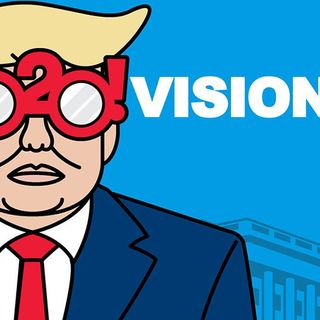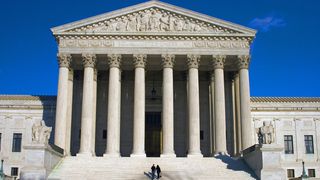Taken by the numbers alone, abortion is unremarkable in the United States. In 2015, an average of 11.8 abortions occurred per 1,000 women between the ages of 15-44. In the United Kingdom the average was 13; in Norway, Denmark, New Zealand and Iceland it was 12; in Sweden, it was 18. In Australia, only South Australia and Western Australia keep statistics on terminations, but extensive research by the ABC in 2017 suggests that the average national rate was about 13.5. Not only is the abortion rate unremarkable, the number of women undergoing the procedure has been decreasing since the 1980s.
How the United States legislates abortion, however, is remarkable. Recently, governors across the United States have signed a wave of extreme anti-abortion bills. Most, but not all, of these governors are Republican. Most, but not all, are men. Most, but not all, represent states in the South. They know that these bills will not become law without a constitutional change by the Supreme Court – their ultimate aim. But in the meantime, they are shifting cultural ideas of what abortion is.
Understanding why abortion is under attack in the United States means considering several threads that have been woven together by anti-abortion advocates for decades. Since the early 1970s, a coalition of people calling themselves pro-life have intertwined religious, political and cultural ideas about women’s reproductive rights into a potent and galvanising campaign to limit, and eventually ban, abortion in the United States.
History
Women have always sought to control how and when they give birth. In Colonial America, abortion was not only regularly practised but in the British colonies, it was also legal. Throughout the 18th and 19th centuries, abortion and birth control methods were widely discussed and practised.
Yet in 1873, Congress passed the Comstock Act which banned, among other things, birth control and abortifacients (substances that induced abortions). These laws were a culmination of efforts that had escalated since the religious fervour of the Second Great Awakening,
However far from putting an end to American women’s efforts to control reproduction, the law pushed birth control and abortions underground.
2020Vision: The Democrats' "unlikeable women"

Fast-forward to the twentieth century and American women continued to seek abortions, but were forced to use hidden, unregulated, and highly dangerous methods. In 1930, abortion was the official cause of death for around 2,700 women, although the real number would have been much higher.
By 1970, lawyers built on decades of women's rights activism by challenging the ban on abortion in the Supreme Court. They brought before the court the case of a young Texan woman, Norma McCorvey, known by the legal pseudonym Jane Roe. McCorvey had sought an abortion in Texas and sued for her rights to access the procedure. The Supreme Court eventually decided the case of Roe v Wade in 1973. Comprised of white, middle-aged, mostly conservative men, the court was hardly a bastion of liberal feminism. Yet it ruled 7-2 in favour of a woman’s right to an abortion. Abortion was now legal across the country.
Political, religious and cultural threads of the anti-abortion movement
The passing of Roe was a landmark moment for women’s rights in the United States. But the case also jolted anti-abortion advocates into more systematic organising. One of their first major legislative victories came just three years later, in 1976, when the House of Representatives passed the Hyde Amendment. The law refused to allow women who were poor and relied upon Medicaid for their healthcare to use the federal funds for abortion procedures. If they needed an abortion they were forced to somehow find the money themselves or resort to extraordinarily dangerous improvised methods. Those who suffered most from the Hyde Amendment – which remains in place to this day – were disproportionately women of colour.
Those who suffered most from the Hyde Amendment – which remains in place to this day – were disproportionately women of colour.
Around the same time, conservative activists such as evangelical tele-preacher Jerry Falwell and anti-feminist crusader Phyllis Schlafly escalated their efforts to push the Republican Party towards socially conservative policies, including those limiting access to abortion. This was a far cry from the more libertarian positions of 1960s New York Republican Governor Nelson Rockefeller or even Ronald Reagan who, as governor of California in 1967, signed one of the most progressive abortion policies of the pre-Roe era. Since the 1980s, the Republican Party has become the party of anti-abortion activism. Although, as we have seen with the bill recently signed by Louisiana’s Democratic governor, this is by no means a simple partisan issue.
One of the successes of the highly organised anti-abortion movement has been its use of provocative imagery and sloganeering, which not only changes policy but also cultural ideas of what abortion is. In the 1990s the National Right to Life Committee made up the phrase “partial birth abortion” to refer to a medical method sometimes used in second-trimester abortions. “Partial birth abortion” is not a medical term. But it nonetheless entered the cultural and political lexicon. By 2003, President George Bush adopted this language in legislation banning the method.
Now legislatures in some states are seeking to ban abortion after only six weeks, describing their proposals as “heartbeat bills”. However, “heartbeat” is a deceptive descriptor. The American College of Obstetricians and Gynecologists – the national medical organisation – has shown that at six weeks, the heart is yet to even form. What is heard instead is electrical activity within a group of cells. No other nation in the world has “heartbeat” laws. Yet this language has powerful resonance with some American voters, with implications that go far beyond the viability of the bills themselves. The choice of words changes the way the media and the wider American public talk about – and ultimately conceptualise – abortion. The manipulative power of non-medical language regarding a medical procedure is part of the wider devaluing of science and research-based knowledge in the United States. The climate emergency “debate” is another example.
The manipulative power of non-medical language regarding a medical procedure is part of the wider devaluing of science and research-based knowledge in the United States.
The signing of these new restrictive bills reflects the views of emboldened politicians who saw in Brett Kavanagh’s nomination to the Supreme Court the chance to finally repeal Roe. Seven states have “trigger laws” that are sitting ready and waiting to immediately make abortion illegal if the Supreme Court does eventually overturn Roe. Yet even without an outright ban, the incrementalists of the anti-abortion movement have already made access to abortion extraordinarily difficult. Six states have only a single abortion clinic.
Ultimately, the ongoing attacks on abortion reveal the deep and enduring power of a patriarchal system in the United States designed to control women and their bodies, especially women of colour and women who are poor. The anti-abortion movement has been one of the most successful groups to reinforce this system of oppression by using religion, politics and culture to erode American women’s ability to choose a healthcare procedure.






